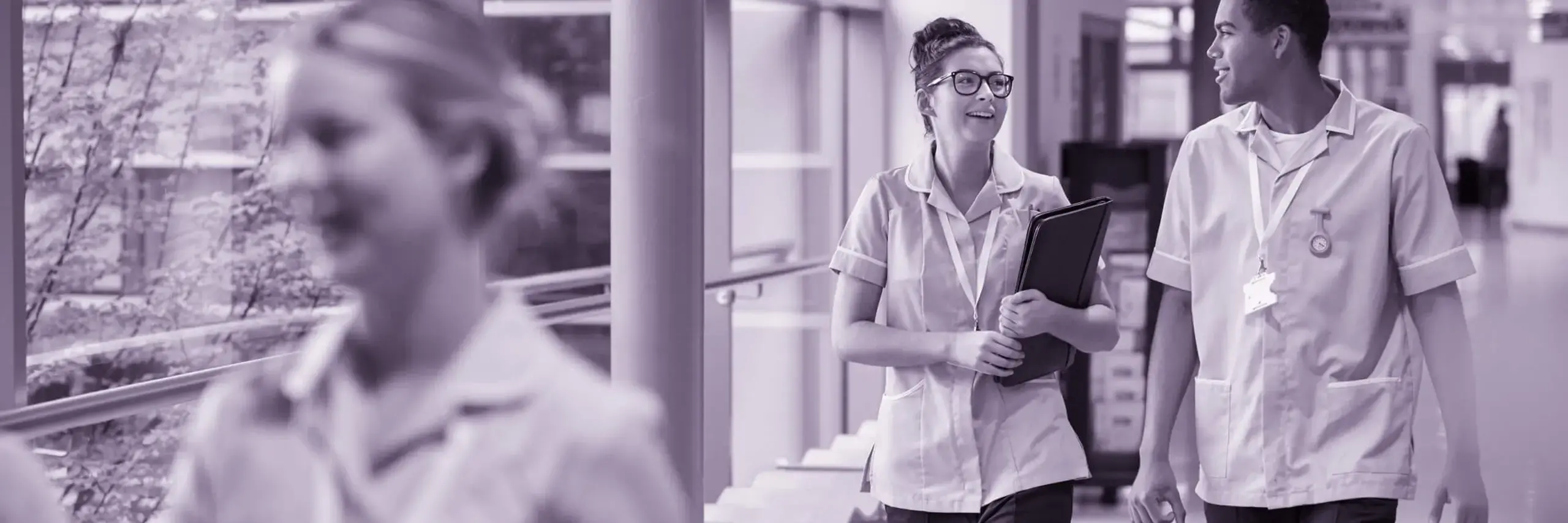Main content
Pandemic healthcare – from the patient’s perspective
26 Nov 2020
At our symposium earlier this month, Lucy provided a powerful account of the Patient Association’s survey work to understand the patient experience during the pandemic. In this guest blog, Lucy discusses the importance of effective patient partnership as the health and care system transforms and eventually recovers.
The ‘first wave’ was difficult and disruptive for patients
We know that the period since March has made enormous demands on everyone who works in the health and care system, and that the winter period we are now entering will be more challenging still. This mirrors the experiences of patients, for whom recent months have been hugely disruptive, and in many cases harmful. This does not apply only to those who have suffered the direct consequences of Coronavirus, from the short-lived to the terminal, although that toll has been terrible enough.
The disruption to services since March has been keenly felt by all patients. Access to regular care was heavily curtailed in the early stages of the pandemic, and planned treatments suspended. Fewer people accessed care for new health problems, and we know from our own survey work and independent polling that it was more common for people to try to access services and struggle than it was for people to stay away voluntarily, although both happened. Patients report highly mixed experiences of remote consultations: for all the attention on digital methods, phone was by far the most common means, and while patients’ reports on balance lean towards the positive, many have found remote methods difficult and even unsatisfactory. By the end of the summer, patients were clearly telling us that in many cases they felt abandoned, and troubled by continuing uncertainty about when they would be able to get care again, if at all.
To a large extent, patients have understood the reasons why accessing care as they normally would was not possible. Often they have been keen to find out how to manage their health and minimise the asks they need to make of the NHS – although again, we know this information has often been hard to come by. There were some good experiences too. People told us about ways in which mutual aid groups, neighbours, faith groups and friends helped them with essential tasks like shopping, or just to stay in touch with other people.
The ’second wave’ will be tough but can be done better with effective patient partnership
With a second wave of coronavirus already gripping the NHS, it is a hard environment in which to be thinking about the finer points of good practice. However, patients’ experiences during the first wave make clear that if learning can be applied, and better approaches found, it is critical that they should be. The NHS’s determination not to shut down services across the board for a second time, despite the pressures of winter, is hugely welcome in that respect.
We advocate for working in partnership with patients, and in the setting of a pandemic this offers ways to maintain patients’ health and wellbeing to a large degree, while enabling the system to prioritise the emergency situation. This can be achieved by patients having care plans that are developed jointly with them, and that they fully understand and support. A patient with an effective care plan and good information about how to care for themselves as much as possible will not be so adversely affected by emergency measures that might temporarily reduce the direct support available to them.
Equally, patients need clinicians and professionals to advocate for them when they need it. Many decisions are being taken, and will be taken over the coming months, about how to prioritise resources: these are invidious choices, and it is important that clinicians and professionals advocate for their patients during these processes, albeit that we know not all needs will be met. In supporting and regulating the professions, regulators should consider whether this advocacy has taken place.
Beyond the immediate crisis, patient partnership will continue to be essential
Hard though it may seem to be considering it now, we will hopefully soon have to consider what services for patients should be like in a post-pandemic world.
We won’t be returning to life as before, for multiple reasons. The pandemic is already guaranteed to have produced long-term shifts in patterns of working and living, which will have implications for demands on health and care services. But more immediately, the health and care system will have to meet both challenges arising directly from the pandemic, and newly acute forms of long-term challenge that were already present: there will be a backlog of treatment; many patients will present with illnesses worsened by lack of treatment during the pandemic, and this will include high levels of mental health need; funding and staffing levels were both plainly inadequate even before the crisis; the NHS’s period of reconfiguration will continue; a solution to the long-running social care crisis is still yet to be found; changing the NHS’s culture on safety and learning remains a wicked problem; the worsening of health inequalities must be reversed; and we are suffering the consequences of long-term under-investment in public health.
Although this is a bleak and daunting list, we can at least point confidently to an approach that will be helpful with all of these challenges: whatever new world is developed for health and care, it must be done in partnership with patients. This applies both on a system level and for patients’ individual care. The challenges are too great, and resources too scarce, for us to produce systems and services that do not meet patients’ needs. Regulators have a meaningful role to play here: through their work on professional standards, they can promote true partnership working between professionals and patients, in which patients are active participants in their care. Patient partnership is the focus of our new strategy from 2021, and we hope to work with as many organisations as possible to ensure that it is embedded as a central way of working, to maximise the benefit to patients from health and care services.
Read our related blogs from the Authority's Chief Executive, Alan Clamp, who gives an overview of the three days of discussions around Resetting regulation and Chris Kenny, Chief Executive, MDDUS. Chris also presented at the symposium and in his guest blog picks up on some of the themes of his presentation - looking at some of the key changes that regulators have made in response to the pandemic and identifying those changes the MDDUS would like to keep and those they would like the regulators to lose.



